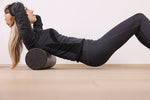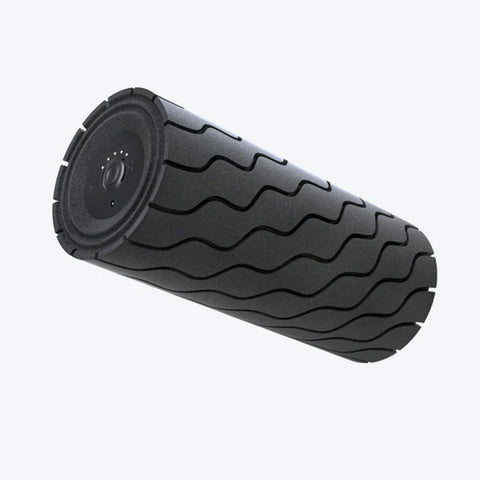
Dos and Don’ts of Using a Foam Roller for Deep Tissue Massage
, by OrthOut Writer, 8 min reading time

, by OrthOut Writer, 8 min reading time
Foam rolling is an excellent way to get those range-limiting, pain-causing knots out without a masseuse. In this blog post, we will discuss the dos and don’ts of using a foam roller for deep tissue massage.
Deep tissue massage is an effective technique for addressing the knots that form on muscles and create tightness, and limit range of motion. It can be challenging to get the results you need with your own hands. Using a tool can be more effective, get to the places you can’t reach, and help you get the consistent pressure you need. Foam rollers are one of the best pieces of rehab equipment for deep tissue massage. However, there is a right and wrong way to use a foam roller. In this blog post, we will discuss the dos and don’ts of using a foam roller for deep tissue massage.
Foam rolling has benefits for athletes, weightlifters, and anyone with tight and sore muscles, even people who spend long hours standing or sitting at a computer. Foam rolling helps to improve circulation to the muscles, which can make them more pliable, move more easily, and help promote recovery after an injury.
The soft tissues around all of your muscles and ligaments are called fascia. Soft tissue dysfunction is a common condition that occurs from repetitive movements, overdoing a workout, strenuous activity, or even inactivity. The strain on the muscles causes knots, or adhesions, to develop in the fascia. These muscle adhesions can cause stiffness, limited range of motion, and pain. Deep tissue massage breaks down the adhesions by applying pressure to them. This type of massage, also known as myofascial release, smooths the muscle out, easing the friction that caused the stiffness, pain, and loss of mobility. Addressing these knots is called self-myofascial release (SMR), and foam rollers are the most commonly used SMR tool.
Foam rolling is a simple and affordable way to work out those knots that lead to discomfort, pain, and loss of mobility. Learning how to foam roll properly can provide a deep tissue massage and help you avoid possible injury and bruising. To get the full benefit of SMR, here are some techniques to foam roller exercises to keep in mind.
Clothes that bunch up will get in the way of the therapeutic effect of this type of exercise. You’ll want to have stretchy, tight-fitting clothing that won’t slide or bunch while you’re rolling. And beware of draw strings and shoe laces that can get in the way.

While it seems that rolling on the part of your body that hurts makes the most sense, the discomfort may actually be caused by muscles in different areas of your body. Looking for tightness, or sensitivity to pressure will help you find the trouble spots, or pressure points. Applying myofascial release to these areas will often help ease pain and improve range of motion elsewhere. For example, a “trick knee” that wants to buckle may be due to tightness in the outside of your leg.
The beauty of foam rolling is that it doesn’t require a lot of effort. Your body weight naturally provides the appropriate amount of pressure to effectively massage your muscles. Once you find that knot, let your body’s weight do the work as you slowly move the tight muscle over the roller. You will also want to make sure that you are carefully supporting yourself with your hands or feet, or both, while rolling.
While foam rollers help with muscle tension and range of motion, they are not a cure-all. You should not use a foam roller when any of the following conditions are present:
It may seem tempting to foam roll over other parts of the body, besides your tight muscles, but doing so could actually cause injury. When using a foam roller, the following areas should be avoided:
With proper technique, foam rolling can provide amazing results. However, it’s important to remember that foam rolling too much, too hard, or too fast, will do more bad than good. You may not get complete relief in one session, but you will make forward progress with a measured approach. The following are common foam rolling mistakes that can lead to bruising, injury, and decreased effectiveness:
When using a foam roller to help alleviate muscle stiffness or aid in at-home physical therapy, you may want to start out with one that is less firm and work up to a firmer one over time. Below, we have outlined a number of foam rollers in various sizes and densities.
CanDo PE Foam Roller
The CanDo PE Foam Roller is great for loosening and unknotting tight muscles while restoring flexibility. This less-dense roller is suitable for adults and children, and is uniquely designed to fit the needs of both beginners and professional athletes alike.
CanDo Composite Foam Roller - Extra Firm
This durable, extra-firm, molded foam roller is essential for home rehab. This one piece of equipment can help increase blood flow to your muscles to help release tension and aid in healing. It’s a commercial-grade therapy roller, so it won’t lose its shape or degrade with use. With a closed cell design, it’s also easy to clean.
CanDo Half Round Foam Roller
This roller offers a stable platform for massaging those hard-to-get-at muscle groups, improving circulation and flexibility. This smaller, half-round roller is also ideal for muscle posture re-education, spinal stabilization, and other motion and strengthening exercises.

The Therabody Wave Roller combines powerful vibration therapy and an innovative wave texture to deliver the most efficient full-body foam rolling experience. This Bluetooth® enabled vibrating foam roller allows you to connect to the Therabody app for personalized recovery routines, releasing tension and increasing mobility where you need it most.
Foam rolling is an excellent way to get those range-limiting, pain-causing knots out without a masseuse. Incorporating foam rolling into a regular fitness routine will help to prevent injury and increase ease of movement. The professionals at Orthopedic Outfitters want to help you find the right foam roller for your needs, so you can get on with your work, games, or leisure activities with efficient, pain-free movements. Order today and receive free shipping when you spend $99 or more!
Shop All Our Home Rehab Equipment Here!
Disclaimer: The information provided on the Orthopedic Outfitters website is designed for educational and entertainment purposes only. This information is not meant to substitute any professional medical advice, treatment, or diagnosis. Always consult with your doctor before beginning any new exercise routines. Depending on your overall health, certain conditions, and medications, your doctor may advise specific levels of activity.